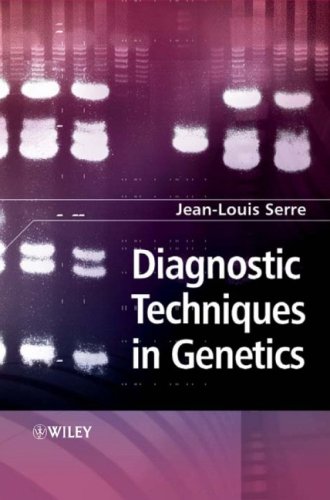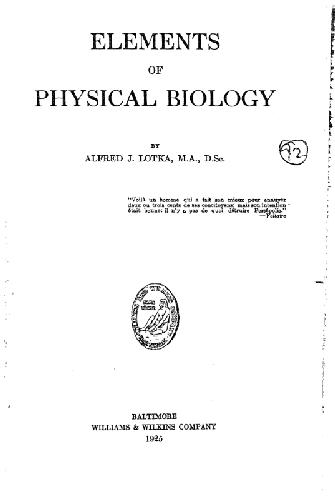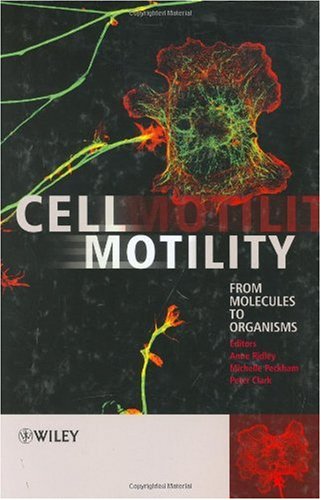Jean-Louis Serre, Isabelle Heath, Simon Heath9780470870242, 0-470-87024-9, 0-470-87025-7, 9780470870259
The first part of the book focuses on DNA/RNA applications and includes many of the latest developments in the field combined with routine procedures of genetic diagnoses, for example cloning and sequencing DNA. The DNA applications presented in the first chapter are then each applied to a specific kind of genetic diagnosis and the text concludes with a chapter devoted to population genetics.
First published in French by Dunod in 2002, this book is an excellent reference for students taking courses in molecular biology, medicine and medical genetics. It is also a useful introduction for postgraduate students and researchers in the field who require a general overview of genetic diagnoses.
Table of contents :
Diagnostic Techniques in Genetics……Page 3
Contents……Page 7
Preface……Page 11
List of Contributors……Page 15
1.1 Nucleic Acids……Page 17
1.2.2 RNA and cDNA……Page 20
1.4.1 DNA Fragmentation……Page 22
1.4.2 Separation of DNA Fragments by Electrophoresis and Membrane Transfer……Page 25
1.5 Selective Amplification of a Nucleotide Sequence……Page 28
1.5.1 DNA Sequence Amplification by PCR……Page 30
1.5.2 RNA Amplification as cDNA by RT–PCR……Page 34
1.5.3 Quantitative PCR Methods……Page 35
1.5.4 RNA or DNA Isothermic NASBA R Amplification……Page 38
1.6.3 DNA Cloning……Page 40
1.6.4 Cloning Vectors……Page 42
1.7.1 Principle of the Sanger Method: The Sequencing Reaction……Page 44
1.7.2 Reading of the Sequencing Reaction Products……Page 45
1.8 Modification of the Sequence of a DNA Fragment: Site-Directed Mutagenesis……Page 50
1.9.2 Probes, Labelling and Reading of the Signal……Page 51
1.9.3 FISH and in situ PCR……Page 53
1.9.4 Detection and Dosage Methods Using Signal Amplification……Page 54
1.9.5 Southern Blot Hybridization……Page 55
1.9.6 ASO Techniques: Dot Blot and Reverse-Dot Blot……Page 56
1.9.7 ARMS and OLA Techniques……Page 60
1.9.8 Definition, Analysis and Applications of RFLPs……Page 63
1.9.9 VNTRs and Microsatellites……Page 66
1.9.10 Single Nucleotide Polymorphism Markers……Page 67
1.9.11 DNA Microarrays……Page 68
1.10.1 Introduction……Page 71
1.10.2 Single-Strand Conformation Polymorphism (SSCP)……Page 72
1.10.4 Searching for Polymorphisms Using DHPLC……Page 73
1.10.5 Protein Truncation Test (PTT)……Page 74
2.1 Introduction……Page 77
2.1.1 Different Mutation Classes……Page 78
2.1.2 Dominance and Recessivity are Explained by Molecular Pathology……Page 79
2.1.3 Genetic Heterogeneity can be Explained by Molecular Pathology……Page 81
2.2.1 Cystic Fibrosis……Page 83
2.2.2 Haemochromatosis……Page 100
2.2.3 Thalassaemias and Drepanocytosis……Page 107
2.3.1 Fragile X Syndrome……Page 117
2.3.2 Genetic Diagnosis of Haemophilia A and B……Page 123
2.3.3 Molecular Diagnosis of Duchenne and Becker Muscular Dystrophies……Page 131
2.4.1 Introduction……Page 143
2.4.2 Polyglutamine Neurodegenerative Disorders……Page 144
2.4.3 Pathophysiology of Polyglutamine Disorders……Page 148
2.5.1 References……Page 151
2.5.2 Bibliography……Page 152
3.1 General Introduction……Page 155
3.2 Cellular Pathways Targeted by the Tumour Process……Page 156
3.3.3 Inactivating Mutations……Page 158
3.5 Benefits of Molecular Studies to Patient Healthcare……Page 159
3.5.1 Chronic Myeloid Leukaemia (CML)……Page 161
3.5.2 Acute Myeloid Leukaemia (AML)……Page 163
3.5.4 Anatomopathologic Diagnosis, Therapy and Prognosis……Page 164
3.6.1 Introduction……Page 165
3.6.2 Genetic Predispositions to Cancers Identified so far……Page 167
3.7.1 Introduction……Page 170
3.7.2 Help Taking Care of at-risk Individuals: Multiple Endocrine Neoplasia Type 2……Page 172
3.7.3 Some Genetic Tests are of Limited Interest: Search for a Constitutive Mutation in the TP53 Gene……Page 173
3.7.4 Molecular Genetic Testing for Breast Cancer Predisposition Through the Search for Mutations in the BRCA Genes……Page 174
3.8 Conclusions and Perspectives……Page 175
3.9 References……Page 177
4.2.1 Introduction……Page 179
4.2.3 Molecular Biology Diagnosis……Page 181
4.3.1 Introduction……Page 186
4.3.2 Mechanisms for the Generation of Microdeletions and Microduplications……Page 188
4.3.3 Methods to Detect Chromosomal Microdeletions……Page 189
4.4 Uniparental Disomies……Page 191
4.6 References……Page 193
5.1.1 Introduction……Page 195
5.1.2 Classical Methods of Analysing Viral Infections……Page 196
5.1.3 Analysis Methods for Viral Infections Using Molecular Biology……Page 199
5.1.4 Conclusions……Page 208
5.2.2 Bacterial Taxonomy……Page 209
5.2.3 Bacteriological Diagnosis……Page 210
5.2.5 Bacterial Typing……Page 213
5.3 Detection of GMOs……Page 217
5.3.1 What is a GMO?……Page 218
5.3.2 Regulations……Page 219
5.3.3 Detection of GMOs and their Derived Products……Page 220
5.4.1 References……Page 226
5.4.2 Bibliography……Page 227
6.2 Genetic Fingerprints by the Analysis of Nuclear DNA……Page 229
6.2.1 The Molecular and Technological Basis of the Scientific Approach……Page 230
6.2.2 The Mathematical Basis of the Scientific Approach……Page 236
6.2.3 Applications……Page 238
6.2.4 A Special Case: The Y Chromosome Sequence……Page 241
6.3.1 Introduction……Page 242
6.3.4 Methods and Techniques……Page 243
6.3.5 Heteroplasmy……Page 245
6.3.6 Application to the Identification of Cadavers……Page 246
6.3.8 Applications to the Discrimination Between Man and Animal, or Between Animals……Page 248
6.4.2 Creation and Maintenance of Genetic Fingerprint Files……Page 249
6.6 Bibliography……Page 251
7.1.1 Analysis of Recessive Diseases……Page 253
7.1.2 Analysis of Dominant Diseases……Page 256
7.2 Multiple Alleles and Informativity……Page 257
7.3 Selection–Mutation Balance and Haldane’s Rule……Page 259
7.4 Diagnosis with Genetic Testing: Cystic Fibrosis – An Academic Case……Page 260
7.5.2 Gametic Equilibrium and Disequilibrium……Page 264
7.5.3 Origin of Gametic Disequilibrium……Page 265
7.5.4 Changes in Gametic Disequilibrium or Linkage Disequilibrium……Page 267
7.6.2 Bibliography……Page 268
Index……Page 269







Reviews
There are no reviews yet.